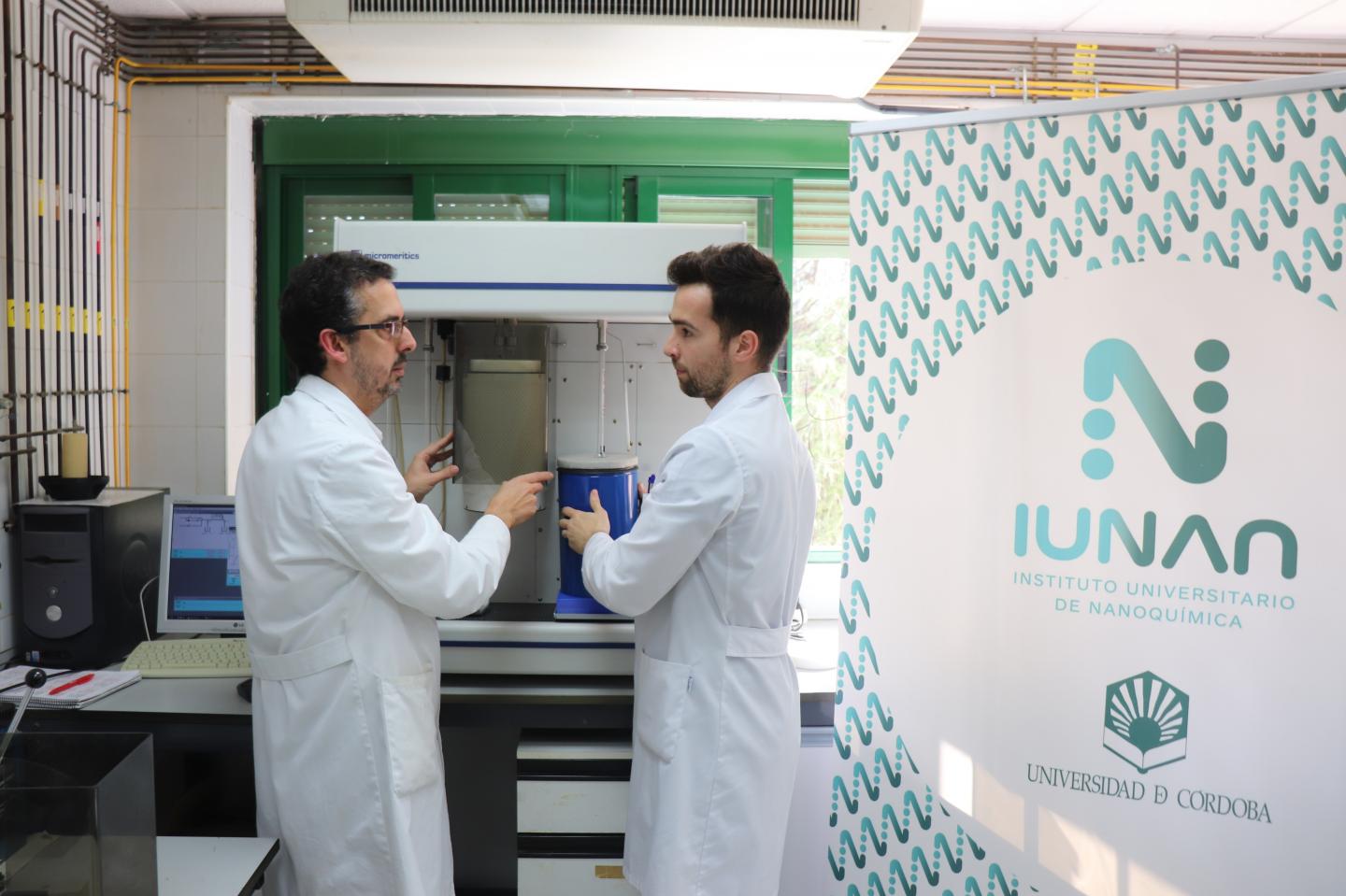
Credit: University of Córdoba
Lithium-ion batteries are used around the world and though over the last few years they have had some competition, such as sodium and magnesium, they continue to be indispensable due to their high density and capacity. The issue is this: this metal has major availability and concentration problems. Almost 85% of its reserves are located in what is known as the Lithium Triangle, a geographical area found on the borders of Argentina, Bolivia and Chile. In addition, it seems that demand will rocket over the next few decades because of the implementation of electric vehicles. Each car equals about 7,000 cell phone batteries, so reusing their different components has become an issue of utmost importance.
Specifically, a research project at the University of Cordoba (Spain) and San Luis University (Argentina), in which Lucía Barbosa, Fernando Luna, Yarivith González Peña and Álvaro Caballero participated, was able to manufacture new lithium batteries from used cell phones, devices with a low recycling rate, which, if not handled properly, end up adding to the long list of electronic waste produced every year worldwide.
In particular, the project found a way to recycle the graphite in these devices, a material located in the negative terminals of batteries whose function is to store and conduct lithium. As highlighted by one of the heads of the study, Professor Álvaro Caballero, the researchers were able to eliminate the impurities of used graphite, reorganize its structure and reactivate it for new use. Interestingly, this material makes up a quarter of the total weight of a lithium battery, so when it is recycled, “we are recovering 25% of the whole energy storage system, a fact that is all the more relevant considering that this material comes from crude oil”, explains Caballero.
Another important aspect of this research is that on the positive terminal of this new recycled battery, they were able to forego the cobalt, which is widely used in the mobile device industry. As pointed out by one of the lead authors of the study, researcher Fernando Luna, “cobalt is a toxic element that is more expensive than others like manganese and nickel, which were used in this research”. What is more, it is one of the so-called blood minerals, whose mining, like coltan mining, is associated with mines in conflict zones.
Promising results
According to the conclusions shown by the study, “the results are comparable and in some cases better than those obtained from commercial graphite”. Some of the tests carried out show that, in the best cases, battery capacity is kept stable after getting through a hundred charge cycles, which equates to about a year of performance.
Despite these promising results and that the tests were done on complete cells of a real battery, the research was performed on a small scale and in the laboratory, hence there is still a long way to go until this manual process of recycling can be standardized.
“Currently, more than 90% of lead battery components used in conventional vehicles are reused”, explains researcher Álvaro Caballero, so, “if we opt for sustainability and the democratization of electric cars, large-scale recycling of lithium batteries has to come about”.
###
The research, in which the FQM 175 research group from the University Institute of Nanochemistry (abbreviated to IUNAN in Spanish) and the School of Science at the University of Cordoba participated, was financed by the Ministry of Science, Innovation and Universities within the framework of the project entitled ‘Advances in lithium-sulphur battery technology: Performance, safety and sustainability.
Media Contact
Elena Lázaro Real
[email protected]
34-957-212-252
Related Journal Article
http://dx.




